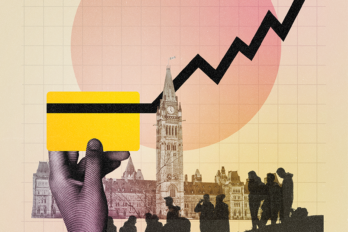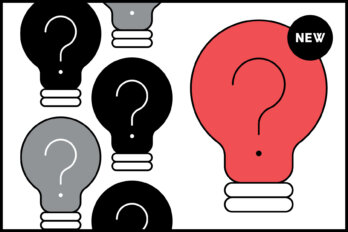There are a total of twelve facts in this single paragraph. When you’re ready, click on the underlined text to read the relevant fact on the page. Read through to see what they are and how we checked them.
“Some of the greatest challenges to the presumption that voters make rational choices have come from the field of behavioural economics, which–unlike traditional economics—focuses on investigating how people actually behave. What some of these researchers have found is that habits, immediate perceptions, and intuition play a more important role in everyday decision making than reason does. Not enough organ donors in your province or country? Automatically enrol everyone, and rely on people’s apathy rather than their better angels to improve your rates. In this and many other cases, behaviour isn’t altered by changing a person’s mind but by reducing the effort needed to reach a desired outcome.”
Excerpt from Alexander Tesar’s “Voting With Our Feelings,” October 2019, The Walrus.
The Facts
In-house fact checkers at The Walrus print out drafts of articles like this one and use a pen or pencil to underline every single fact in an article. Above each fact, they write numbers corresponding to the sources that corroborate it.
There are at least twelve facts in the paragraph above, and especially meticulous fact checkers might divide some of these into the even more basic facts they are composed of.
To verify this sort of interpretation, we need to make sure that the statements of fact that it is based on are accurate and fair, and that the interpretation of those facts is fair and logically sound.
The statements of fact that this interpretation is based on are in this paragraph. Since we were able to verify them and since there was nothing illogical or unfair about the inferences drawn from them, this interpretation checks out.
1. “Voting Choice and Rational Choice,” a scholarly article in an Oxford Research Encyclopedia on the topic of politics, confirms that democratic political philosophy presupposes that voters are rational when voting.
2. “Voting is Irrational. Emotions Always Win,” an article in the Guardian arguing against the presumption that voters are rational, provides evidence that this presumption exists
3. “Are We Rational or Not? The Exploration of Voter Choices during the 2016 Presidential and Legislative Elections in Taiwan,” a scholarly article in the academic journal Frontiers in Psychology, explains that democracies presuppose voter rationality
1. “What is Behavioural Economics?” in the Guardian.
2. “What is Behavioral Economics?” in Psychology Today.
We consulted a university-level economics textbook, which informed us that:
“. . . through the second half of the twentieth century, many economists . . . claimed that the entire system of economic theory is so purely deductive that everything in it can be deduced from one essential axiom. This, the rationality axiom, states that ‘rational economic man maximizes his utility.”
This passage indicates that the model of human behaviour underlying traditional economics was not based on inductive observations of people’s behaviour in the real world, but the assertion that there exists a first principle from which traditional economic theory could be deduced.
Chapter 7 of “Microeconomics in Context”.
1. “What is Behavioural Economics?” in the Guardian.
2. “What is Behavioral Economics?” in Psychology Today.
Finding an article that draws on the research of many researchers to support this idea necessarily means that it is true that some researchers have found this idea to be true.
“Maps of Bounded Rationality: Psychology for Behavioral Economics,” in the American Economic Review.
To verify them, we consulted the scholarly article by the Nobel Memorial Prize–winning psychologist referenced earlier. Its argument that everyone engages in two types of thinking, but that people tend to rely on the first, intuitive kind, supports each factual statement in this passage.
We also consulted the Guardian article referenced earlier, which further corroborates the information in this passage.
“When Push Comes to Shove: Nudge Theory and Organ Donation,” from the Decision Resources Group.
“Nudging the dead: How behavioural psychology inspired Nova Scotia’s organ donation scheme,” in the National Post:
“When Push Comes to Shove: Nudge Theory and Organ Donation,” from the Decision Resources Group.
“Nudging the dead: How behavioural psychology inspired Nova Scotia’s organ donation scheme,” in The National Post.
The authors of Nudge gave examples of situations in which people who present others with an array of choices have to take into consideration whether and how to shape the presentation of those choices so that people expend less effort making more desirable choices than they do when making less desirable ones. This necessarily shows that the idea expressed in this sentence applies to “many other cases” besides increasing organ donations.
Normally, The Walrus requires two secondary sources for each fact, but because this secondary source is co-written by one of the leading experts in the field and the information was not contentious, it sufficed.
https://www.researchgate.net/publication/281109566_’Nudging’_registration_as_an_organ_donor_Implications_of_changes_in_choice_contexts_for_socio-cultural_groups
Both works indicated that it is a tenet of behavioural economics that policy makers can change people’s behaviour by designing the contexts in which they make choices so that desirable choices are easier to make.




